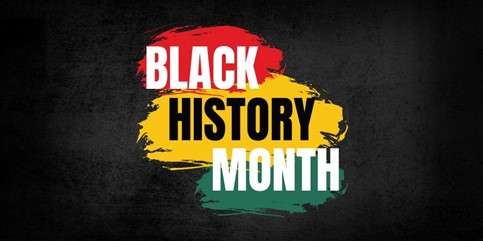
Black History Month, celebrated throughout February each year, is a time to honor Black Americans’ achievements and their central role in U.S. history. It’s also a time to acknowledge the systemic barriers Black people in this country have faced throughout that history and consider the work we must all engage in to eliminate the resulting inequities. Evidence of those barriers and inequities can be found in most measures of well-being. The higher rate of vision loss among Black Americans is one example.
According to research conducted by scholars at The Ohio State University and published by VisionServe Alliance last year, the number of people with vision impairment is expected to increase by 118% by the year 2050. The greatest increase will be among women, older people, African Americans and Hispanics. In Wisconsin, African Americans over 65 are three times as likely to report vision impairment as their White peers (12.1% vs. 3.6%).
These imbalances are rooted in longstanding inequities. “We know that vision loss can impact anyone, but certain groups are more likely than others to experience it,” says Council Executive Director Denise Jess. “Often these groups face barriers to healthcare information and they may not know about vision rehabilitation services or may be hesitant to reach out.”
Even those who do have access to health information face barriers. Transportation is a common one. According to National Institutes of Health (NIH) studies, transportation barriers lead to rescheduled or missed appointments, delayed care, and missed or delayed medication use. That may lead to poorer management of chronic illness, resulting in poorer health outcomes.
Transportation inequity between White and Black Americans is significant, with more than twice the percentage of Black Americans reporting transportation difficulty (24.7% vs. 11.6%).
Primary care visits are frequently where vision loss is first identified. Unfortunately, accessing primary care is another health inequity between White and Black Americans. Mistrust of the medical establishment, grounded in a long history of discrimination and profiling, feeds into this. NIH research shows that Black Americans have historically used the emergency room and hospital outpatient departments in lieu of regular doctor’s office visits at higher rates than their White counterparts. Using emergency rooms instead of primary care sites is correlated with poorer health outcomes, according to the NIH.
During this Black History Month, it’s important to acknowledge that racial inequities still exist in access to health care, including preventive care and rehabilitation services that help reduce the impact of vision loss on quality of life. Disability advocates agree that health care providers and transportation planners need to work harder to address these barriers. The Council does not exempt itself from this call to action. While the Council serves clients on a sliding fee scale, that’s just a start.
Our advocacy activities play a role as well. Because Black Americans are disproportionately affected by the systemic barriers that people with vision loss face, our policy work to eliminate those barriers can help reduce the racial disparities in health outcomes, transportation access, and a litany of other critical areas.
“It’s imperative for the Council to be thoughtful and strategic in our outreach efforts to build connection and trust among diverse communities,” says Denise. “We know first-hand the life-changing impact and improved quality of life that vision rehabilitation, orientation and mobility, low vision and access technology training can bring, and we believe that everyone deserves opportunities to develop these skills. These are continuous efforts.”
NIH Sources
Transportation:
NCBI.NLM.NIH.gov/pmc/articles/PMC4265215
Primary Care:
NCBI.NLM.NIH.gov/pmc/articles/PMC4899337

